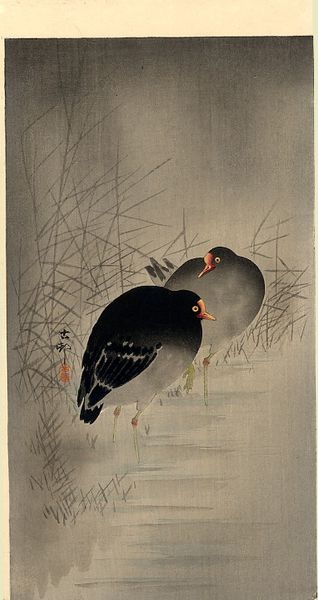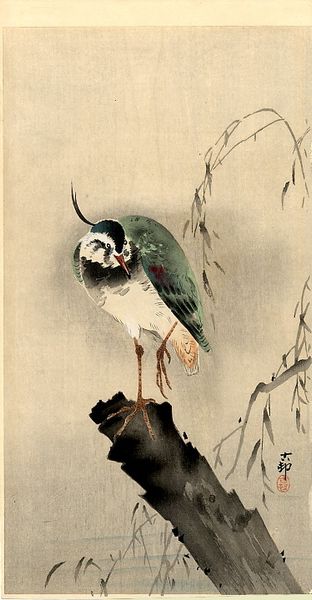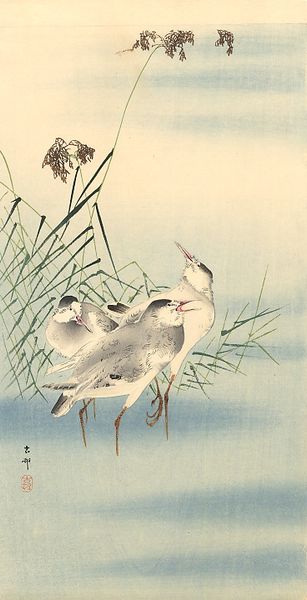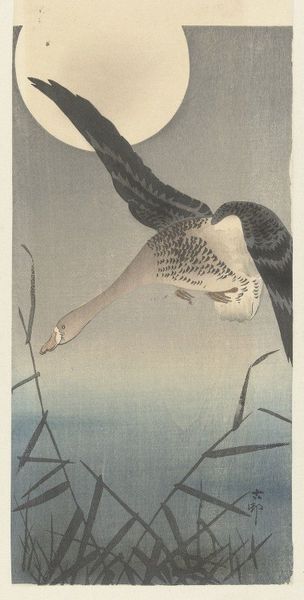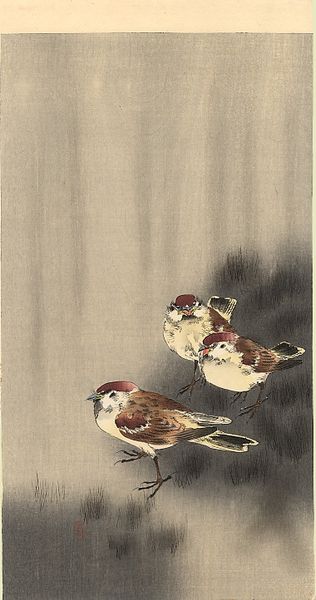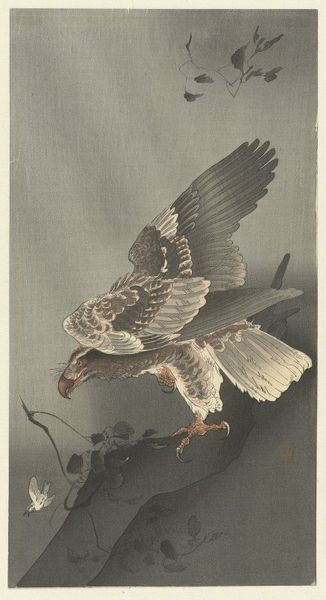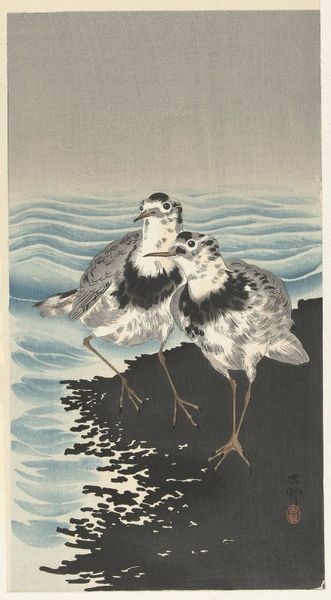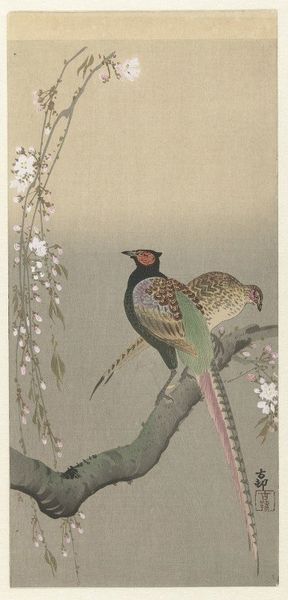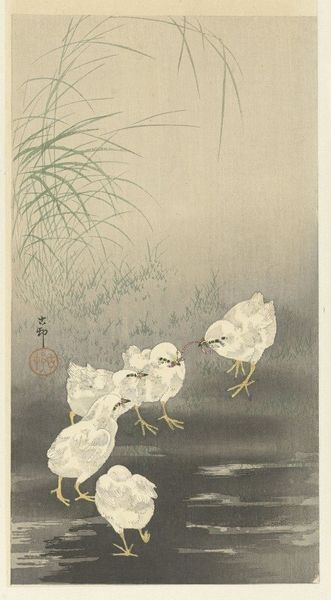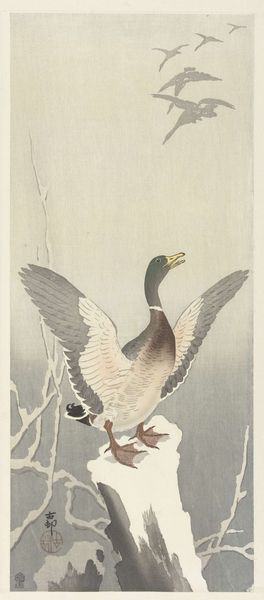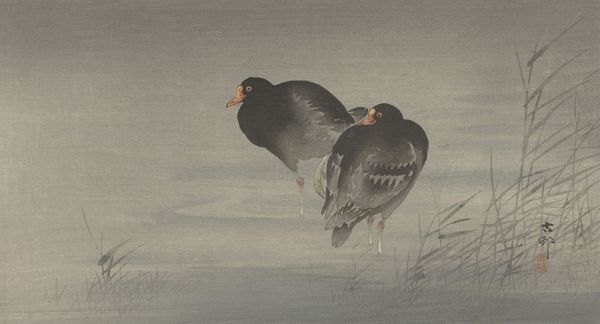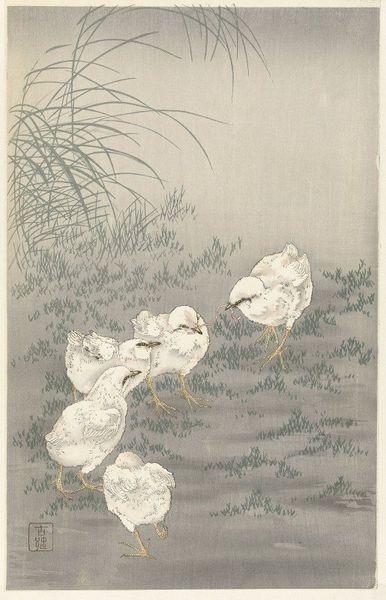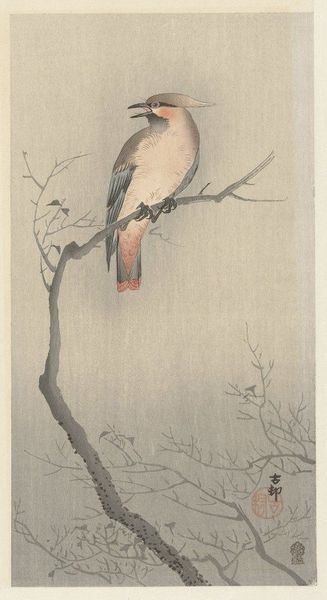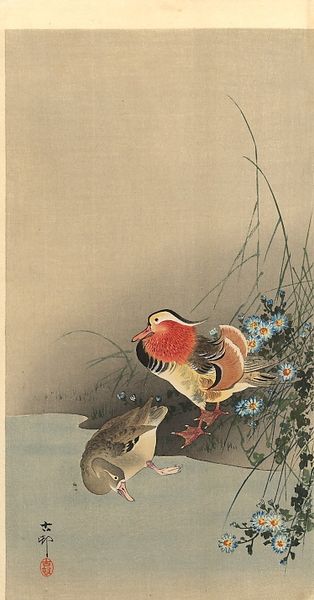
Copyright: Public Domain: Artvee
Curator: What a serene piece! My first impression is how peaceful these birds appear against the muted background. Editor: Indeed. This is "Three Tame Pigeons," a woodblock print crafted between 1900 and 1930 by Ohara Koson, an artist associated with the shin-hanga movement which revitalized traditional ukiyo-e printmaking. Curator: Ah, shin-hanga. So we see that blending of East and West, appealing to European tastes while keeping traditional Japanese methods alive? What’s striking is the use of subtle gradations; they capture the texture of the birds' feathers beautifully, almost like a watercolor. You can almost feel the artist engaging with the physical act of carving the woodblock itself. Editor: Absolutely. The socio-political aspect of this work lies in its commercial appeal. The shin-hanga movement was largely driven by the desire to create art that could be exported, consumed by a Western audience interested in idealized depictions of Japan. These prints became commodities in the global art market. Curator: The pigeons themselves become interesting from this angle, symbols of domesticity, adapted and fashioned for market demands. There is a distinct sense of "Japan-ness" fabricated for consumption here. Do we know if he used photographs or sketches when developing his works? How was he positioning traditional Japanese arts into these global consumer habits? Editor: Historical documents suggest Koson and the other artists may have used photographs to supplement preliminary sketches. I imagine it assisted greatly in their efficient production for commercial demands. Think about it, printmaking would take several weeks for a small run and would have required extensive collaboration to reach the Western audience. Curator: What I appreciate is that despite the market considerations, the artisanship involved remains remarkable. The choice of materials, the skilled labor to carve the wood, and the dedication that this artisan must've required speaks to an inherent value. It reminds me that behind every product is a tangible process. Editor: Precisely. This print allows us to examine not only the artwork but also its context: the artistic movements, economic conditions, and consumer preferences that influenced its creation and its reception. These elements provide a full understanding of the print’s continuing appeal. Curator: Seeing it through the lens of the shin-hanga movement helps understand how art transforms within complex global interchanges. Thank you! Editor: My pleasure. It’s important to consider how historical forces continuously mold the trajectory of art.
Comments
No comments
Be the first to comment and join the conversation on the ultimate creative platform.
